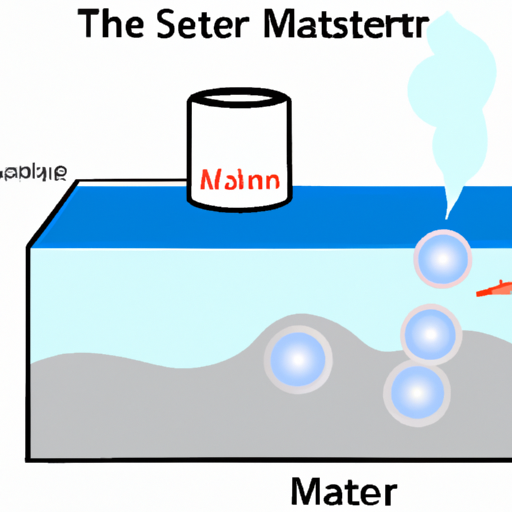Introduction
The interconversion of three states of matter is a fundamental concept in chemistry and physics. It refers to the ability of matter to change from one state to another, namely solid, liquid, and gas. Understanding this process is crucial in comprehending various natural phenomena and industrial applications. In this article, we will explore the interconversion of the three states of matter and delve into the factors that influence these transitions.
Interconversion of Solid to Liquid
The first interconversion we will discuss is the transition from a solid to a liquid state. This process is known as melting or fusion. When heat is applied to a solid substance, the particles within the solid gain energy and start to vibrate more vigorously. As a result, the attractive forces between the particles weaken, allowing them to overcome the intermolecular forces holding them in a fixed position. This leads to the solid substance transforming into a liquid.
The temperature at which a solid substance melts is known as its melting point. Different substances have different melting points due to variations in their molecular structures and intermolecular forces. For example, metals generally have high melting points, while organic compounds tend to have lower melting points.
Interconversion of Liquid to Gas
The second interconversion we will explore is the transition from a liquid to a gas state, which is commonly referred to as vaporization or evaporation. When heat is applied to a liquid, the kinetic energy of the particles increases. As a result, some particles gain enough energy to overcome the intermolecular forces holding them together in the liquid state. These particles escape from the liquid surface and enter the gas phase, forming a vapor.
The temperature at which a liquid substance vaporizes is known as its boiling point. Similar to melting points, boiling points vary depending on the substance. Factors such as atmospheric pressure can also influence the boiling point of a liquid.
Interconversion of Gas to Solid
The final interconversion we will discuss is the transition from a gas to a solid state, known as deposition or condensation. When a gas cools down, the particles lose kinetic energy, causing them to slow down and come closer together. As a result, the intermolecular forces become stronger, and the gas particles condense into a solid state.
An example of deposition is the formation of frost on a cold surface. When water vapor in the air comes into contact with a cold window, it loses heat energy and transforms directly into ice crystals.
Factors Affecting Interconversion
Several factors influence the interconversion of states of matter. Temperature and pressure are the primary factors that determine the state of a substance. Increasing the temperature generally favors the transition from solid to liquid and from liquid to gas. Conversely, decreasing the temperature promotes the conversion from gas to liquid and from liquid to solid.
Pressure also plays a role in interconversion. For example, increasing the pressure on a gas can cause it to liquefy. This is why gases like carbon dioxide can be stored in pressurized containers.
Conclusion
The interconversion of the three states of matter – solid, liquid, and gas – is a fundamental concept in science. Understanding how matter can transition between these states is crucial for various applications, from cooking and chemical reactions to weather phenomena. By considering factors such as temperature and pressure, scientists can predict and control these interconversions, leading to advancements in various fields.




